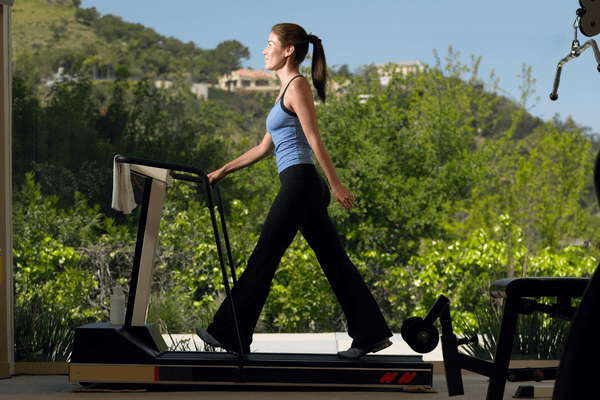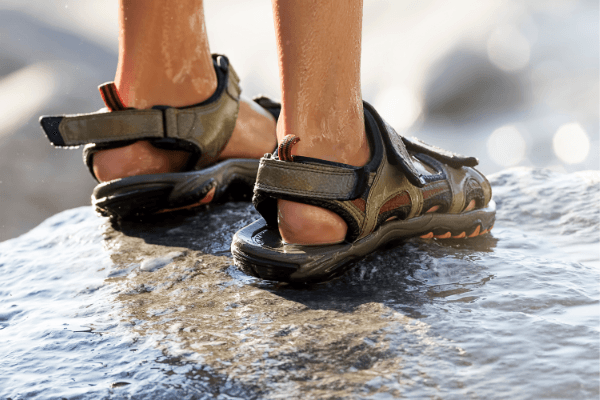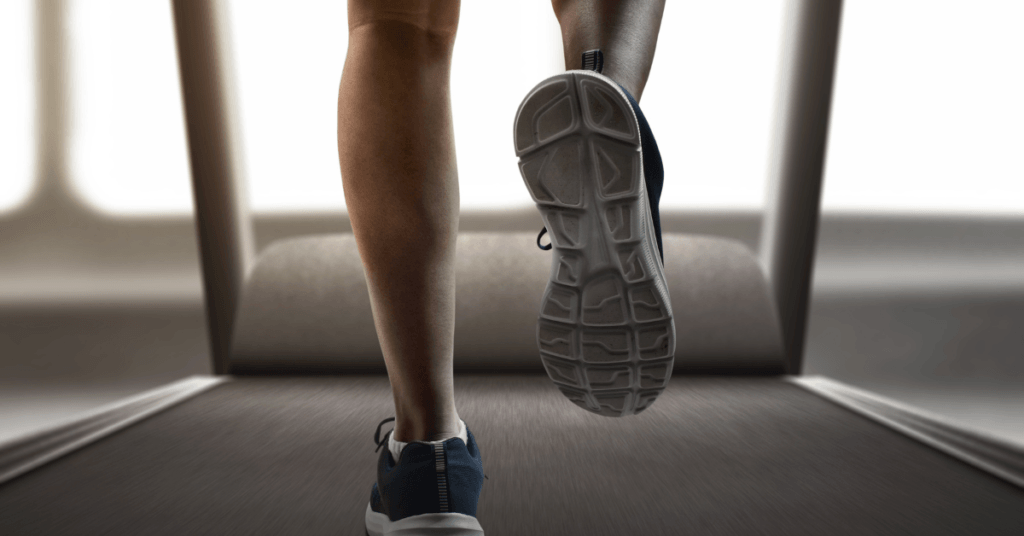Is running on a treadmill bad for your knees? Yes, it can be if you don’t use the proper form and implement other strategies for knee joint health.
Treadmills are the holy grail for people who live in climates that make it challenging for outdoor running. But since as many as 30% of runners suffer from Runner’s Knee, you’re understandably concerned about the impact treadmills can have on your knees.
The good news is that treadmills aren’t bad for your knees if you have the correct form and equipment.
If you have a knee injury already it doesn’t necessarily have to stop you from running. Have a look at our guidance on how to tape a knee for running. And remember there are lots of other exercises you can employ to supplement your workout, check out our recommendations on yoga for bad knees.
Contents
Treadmill Versus Outdoor Running
I don’t know about you, but I’m a fan of outdoor running. Unfortunately, my knees don’t always feel the same.
That’s because running outside causes your legs to work more to balance when encountering obstacles ranging from pebbles to curbs. So, there’s a greater chance of landing wrong and injuring your knee. In contrast, treadmills have an even surface and a cushioned belt.
Some studies suggest that people often use shorter strides when running on treadmills versus outdoors. Since shorter strides correlate to lower knee impact, this alone can reduce the risk of knee injury when running on a treadmill.
Of course, the flip side is that because treadmills involve such methodical running, harnessing the same muscles with next-to-no variation, the muscles around your knees could become weaker. But there’s an easy fix for this, and I’ll reveal it shortly.
How to Safely Run on a Treadmill
Is running on a treadmill bad for your knees? No, not inherently. But it can significantly damage your knees if you don’t use the proper running form.
Below are the steps I follow to keep my knees safe.
Step One: Choose the Right Shoes
Properly fitted running shoes are essential for protecting your knees on the treadmill and wherever you run.
Everyone’s feet have different contours, and proper running shoes will reduce the impact your foot—and joints—have when hitting the ground by cushioning the midsole area. It’s also vital to choose shoes that fit snugly.
Step Two: Start by Walking

I get it—walking on the treadmill sounds boring if you’re in the mood for a sweaty run. But walking when you first embark on your treadmill adventure is helpful because you can practice a heel-toe motion.
The benefit of landing on your heel followed by your toe when running is that it allows your joints to absorb the impact from your ankles to your hips. All other stride methods concentrate more of your weight on your knees, opening the potential for injury.
Step Three: Practice Your Posture
You may have nailed the ideal running posture when cruising down your favorite outdoor trail. But there’s something about hopping on a treadmill that makes people lean forward or hunch over (speaking from experience!).
Since poor posture equates to more potential pain for your knees, follow the best practices below to keep your knees feeling their best.
- Engage your core
- Lengthen your spine to remain tall
- Pull your shoulders back and away from your ears
Step Four: Ease Into It
Running on the treadmill is easier than outdoor running because the treadmill belt helps you with leg turnover, taking some of the work off your plate. So, many people feel inclined to run faster when they embark on treadmill running because, well, they can.
But that doesn’t mean you should run faster. Instead, focus on gradually increasing the running speed once you’ve perfected your foot placement and posture when walking on the treadmill. Your knees will thank you for laying a strong foundation.
Step Five: Cross Train

Cross-training is essential for knee health when running on the treadmill because it helps strengthen the muscles around your knees. Having stronger muscles means less pressure on your knee joint, reducing potential cartilage tear.
In contrast, if you use running on the treadmill as your only form of exercise, your joints will undergo the same repetitive motions. That can negatively affect your knee health over the long term, especially if you don’t use the proper form I’ve shared above.
Protecting Your Knees for Treadmill Running
Best practices for keeping your knees safe isn’t exclusively for when you’re running on the treadmill. They apply for any running exercise. But there are several items you can do before and after your workout to ensure your knees remain healthy for many more treadmill runs.
Some of the best ways to protect your knees pre and post-treadmill workout include:
- Regularly stretch your knees and leg muscles
- Weight train with a focus on your legs and core
- Apply ice to your knees after running
- Stay hydrated
Implementing these strategies and using the proper shoes and form will significantly decrease the risk of developing Runner’s Knee or other painful knee conditions when running on the treadmill.
You might also be interested in our explainer on does running make your butt smaller.



